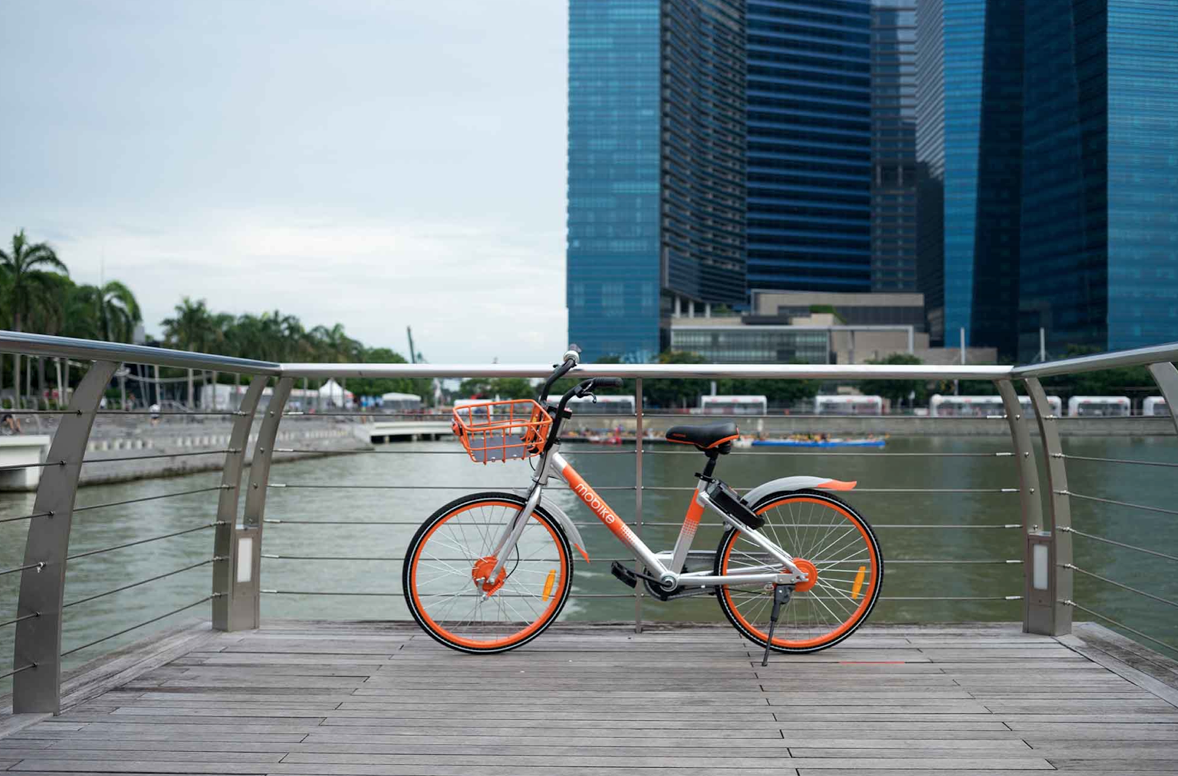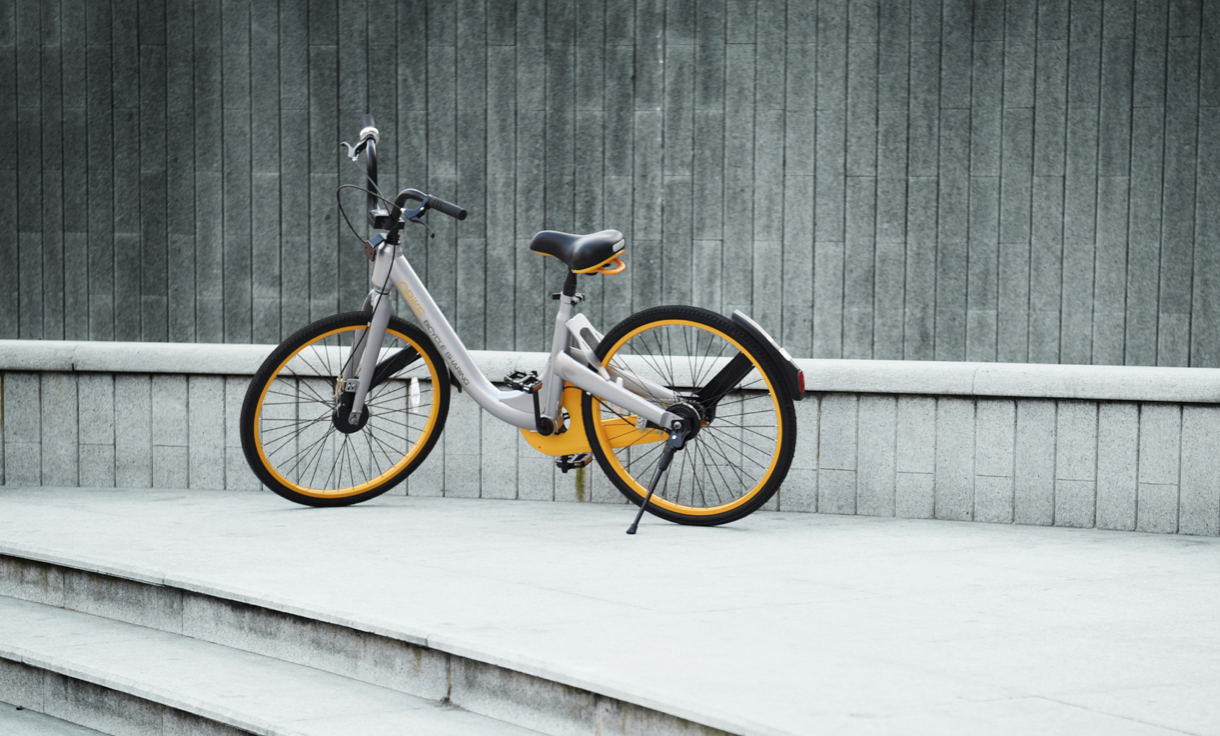Don’t tell me you haven’t seen them — a fleet of yellow or orange bicycles parked outside MRT stations, housing estates, bus stops, and offices. Almost overnight, the little red dot saw a boom in the popularity of bike sharing, with a handful of operators — both homegrown and foreign — leading the pack in transforming Singapore into an even more car-light society.

- THE TIME IS NOW
- HIT THE GROUND RUNNING?
- MORE THAN JUST A BIKE
- NO TO VANDALISM, YES TO GOOD RIDING HABITS
- CYCLING TOWARDS GROWTH
If you’re a frequent traveler, you’ll notice this isn’t a new concept. You may have spotted Citibike in New York City, BikeMi in Milan, or the ubiquitous Bangkok Bike in the Thai capital. So why is Singapore only jumping on the bandwagon now?
“Indeed bike sharing is not a new concept, but there are two types of solutions. The first is about station solutions, which requires users to rent a bike from a designated location. The other one is the stationless solution, which is the model that we follow,” reveals Sharon Meng, Singapore Country Manager, Mobike. “The stationless solution is only possible when the IoT (Internet of Things) solutions have matured, and that time is now. Also, the wide usage of smartphones today has made this possible.”
“The technology is definitely in place now,” says Edward Chen, Co-Founder & CMO, OBike. “You have the SIM cards and the telco operators ready to expand the service for IoT. So right now, the infrastructure for stationless bike sharing is in place — not just the infrastructure on the street, but also the infrastructure of the whole industry. That’s what made 2017 the right time.”
- THE TIME IS NOW
- HIT THE GROUND RUNNING?
- MORE THAN JUST A BIKE
- NO TO VANDALISM, YES TO GOOD RIDING HABITS
- CYCLING TOWARDS GROWTH
Hit The Ground Running?
As with any business venture, there are hurdles to be crossed. For Mobike, a China-based brand, a lot of research was involved before launching in Singapore, their first overseas market. “Before we started in March 2017, we studied the user behavior, road conditions, traffic regulations, and established a relationship with the local government. We found that roads in Singapore, compared to China, are hillier, which is why a lot of modifications to the bikes had to be done,” says Sharon.
As for oBike, which is a Singapore-based company, Edward has this to say: “ The industry is really quite new and no one can say they know everything about it. It’s definitely not easy so we learn from trial and error. Our advantage, however, is that we are the first bike sharing company that started here (soft-launch in January 2017) so we understand the market a bit deeper. Whether you’re operating in a big or small market like Singapore and want to stand out, you need a clear vision of how you want things to run on your side. You can’t be too caught up about what your competitors are doing. The most important thing for us was how and how quickly we can achieve our targets.”
However, both Sharon and Edward agree that there is an advantage to operating here. “I think Singapore is a market that’s relatively easier compared to US or Europe in terms of bicycle certification. Singapore is not as strict once you follow the regulations that need to be observed,” says Sharon. Meanwhile, Edward comments on the quality of the Singapore user and says, “The quality of the consumer here is good, which means facing less challenges with vandalism. The infrastructure for cycling is good and the government is very supportive. They help in promoting cycling and following an active lifestyle, and also have a lot of cycling networks set in place.”
- THE TIME IS NOW
- HIT THE GROUND RUNNING?
- MORE THAN JUST A BIKE
- NO TO VANDALISM, YES TO GOOD RIDING HABITS
- CYCLING TOWARDS GROWTH
More Than Just A Bike

For non-users (I’m guilty), a shared bike is just a bike. But after talking to Sharon and Edward, I was impressed at how technologically advanced everything is.
“The bikes are our biggest asset, but what people don’t know is that we are running the largest IoT network in the world, that everyday, we are running about 20 terabytes of global data from the IoT system,” reveals Sharon. And at the heart of it all, there is the Magic Cube, which is the whole backend system of Mobike. “There is some artificial intelligence (AI) analysis to what we do. The Magic Cube helps combine data like weather, what’s happening during the holiday season, whether there are major events going on, as well as past user behavior. We combine all this data together to predict usage of the next day and usage for the next week. This helps our operations team react more proactively.”
Just like Mobike, oBike also harnesses the power of data for better performance. “Behind our bikes is a holistic data system, which helps us monitor all the bikes — their locations, status, whether people are using them or not, feedbacks and reports, and supply and demand,” shares Edward. He continues, “Technology-wise, we will also implement enhanced tracking and monitoring systems, which will help when something urgent happens.”
- THE TIME IS NOW
- HIT THE GROUND RUNNING?
- MORE THAN JUST A BIKE
- NO TO VANDALISM, YES TO GOOD RIDING HABITS
- CYCLING TOWARDS GROWTH
No To Vandalism, Yes To Good Riding Habits
By understanding what goes behind the scenes, users will hopefully respect the product more. User education, whether through campaigns on social media or roadshows, is still a growth area that needs to be strengthened, given the number of vandalized bikes seen on the streets or unfortunate incidents captured on social media.
“Thankfully, incidents of extreme unruly behavior involving our bikes are marginal,” says Sharon. In oBike’s case, Edward says, “A lot of people who unfortunately do extreme things to our bikes are drunk. They think they can do anything and everything, especially if it’s public property.”
So how do the companies deter this? At the moment, both Mobike and oBike have a credit rating system in place where all users start with 100 points. But if you go below a certain number of points due to improper use of the bikes, users will be asked to pay a higher rental rate. And once a user reaches zero points, they will be banned from using it altogether.
When asked if stricter measures will be set in place, such as penalties and fines, both Sharon and Edward believe that fighting fire with fire is not the way forward. “We want to use a more positive way to communicated with our users,” says Edward. “We are getting a rewards system in place to incentivize good behavior.” And on the Mobike camp, Sharon reveals that they are working together with commercial brands to reward users with shopping vouchers. “At the end of the day, we still want to encourage people to try out the service and at the same time, shape better user habits."
- THE TIME IS NOW
- HIT THE GROUND RUNNING?
- MORE THAN JUST A BIKE
- NO TO VANDALISM, YES TO GOOD RIDING HABITS
- CYCLING TOWARDS GROWTH
Cycling Towards Growth



Given the rapid growth of bike sharing in Singapore and the rest of the world, the service looks like it’s here to stay. The numbers don’t lie either.
“As of September 2017, we’ve reached over 2 million users in Southeast Asia alone. We recently just ventured into the European market so we don’t have the numbers for that yet,” Edward confesses.
And as for Mobike, we’ve learned that there are 200 million users registered on their platform globally, and up to 30 million rides completed daily.
Given the constant growth both Mobike and oBike are exhibiting, what else is in the pipeline? Technology seems to be the main focus. Edward shares, “We will definitely launch a lot of new technology in the coming months that will help everyone have a better experience, whether it’s through hardware or software.” Aside from that, collaborations will also play a big part going forward, with successful partnerships with EZ-Link setting things into motion.
“At the end of the day, what bike sharing wants to achieve is to continue transforming urban transportation,” says Sharon. “We will seek to improve user experience to expand our footprint to more markets in the world. But closer to home, we will work closer with the Land Transport Authority to implement more parking locations and already, we’ve identified 400 locations near bus stops, commercial buildings, parks, and schools.”







.jpg)
.jpg)





 Back
Back
